Data Structures and Algorithms
- Introduction to Data Structures and Algorithms
- Time and Space Complexity Analysis
- Big-O, Big-Theta, and Big-Omega Notations
- Recursion and Backtracking
- Divide and Conquer Algorithm
- Dynamic Programming: Memoization vs. Tabulation
- Greedy Algorithms and Their Use Cases
- Understanding Arrays: Types and Operations
- Linear Search vs. Binary Search
- Sorting Algorithms: Bubble, Insertion, Selection, and Merge Sort
- QuickSort: Explanation and Implementation
- Heap Sort and Its Applications
- Counting Sort, Radix Sort, and Bucket Sort
- Hashing Techniques: Hash Tables and Collisions
- Open Addressing vs. Separate Chaining in Hashing
- DSA Questions for Beginners
- Advanced DSA Questions for Competitive Programming
- Top 10 DSA Questions to Crack Your Next Coding Test
- Top 50 DSA Questions Every Programmer Should Practice
- Top Atlassian DSA Interview Questions
- Top Amazon DSA Interview Questions
- Top Microsoft DSA Interview Questions
- Top Meta (Facebook) DSA Interview Questions
- Netflix DSA Interview Questions and Preparation Guide
- Top 20 DSA Interview Questions You Need to Know
- Top Uber DSA Interview Questions and Solutions
- Google DSA Interview Questions and How to Prepare
- Airbnb DSA Interview Questions and How to Solve Them
- Mobile App DSA Interview Questions and Solutions
DSA Interview Questions
- DSA Questions for Beginners
- Advanced DSA Questions for Competitive Programming
- Top 10 DSA Questions to Crack Your Next Coding Test
- Top 50 DSA Questions Every Programmer Should Practice
- Top Atlassian DSA Interview Questions
- Top Amazon DSA Interview Questions
- Top Microsoft DSA Interview Questions
- Top Meta (Facebook) DSA Interview Questions
- Netflix DSA Interview Questions and Preparation Guide
- Top 20 DSA Interview Questions You Need to Know
- Top Uber DSA Interview Questions and Solutions
- Google DSA Interview Questions and How to Prepare
- Airbnb DSA Interview Questions and How to Solve Them
- Mobile App DSA Interview Questions and Solutions
Data Structures and Algorithms
- Introduction to Data Structures and Algorithms
- Time and Space Complexity Analysis
- Big-O, Big-Theta, and Big-Omega Notations
- Recursion and Backtracking
- Divide and Conquer Algorithm
- Dynamic Programming: Memoization vs. Tabulation
- Greedy Algorithms and Their Use Cases
- Understanding Arrays: Types and Operations
- Linear Search vs. Binary Search
- Sorting Algorithms: Bubble, Insertion, Selection, and Merge Sort
- QuickSort: Explanation and Implementation
- Heap Sort and Its Applications
- Counting Sort, Radix Sort, and Bucket Sort
- Hashing Techniques: Hash Tables and Collisions
- Open Addressing vs. Separate Chaining in Hashing
- DSA Questions for Beginners
- Advanced DSA Questions for Competitive Programming
- Top 10 DSA Questions to Crack Your Next Coding Test
- Top 50 DSA Questions Every Programmer Should Practice
- Top Atlassian DSA Interview Questions
- Top Amazon DSA Interview Questions
- Top Microsoft DSA Interview Questions
- Top Meta (Facebook) DSA Interview Questions
- Netflix DSA Interview Questions and Preparation Guide
- Top 20 DSA Interview Questions You Need to Know
- Top Uber DSA Interview Questions and Solutions
- Google DSA Interview Questions and How to Prepare
- Airbnb DSA Interview Questions and How to Solve Them
- Mobile App DSA Interview Questions and Solutions
DSA Interview Questions
- DSA Questions for Beginners
- Advanced DSA Questions for Competitive Programming
- Top 10 DSA Questions to Crack Your Next Coding Test
- Top 50 DSA Questions Every Programmer Should Practice
- Top Atlassian DSA Interview Questions
- Top Amazon DSA Interview Questions
- Top Microsoft DSA Interview Questions
- Top Meta (Facebook) DSA Interview Questions
- Netflix DSA Interview Questions and Preparation Guide
- Top 20 DSA Interview Questions You Need to Know
- Top Uber DSA Interview Questions and Solutions
- Google DSA Interview Questions and How to Prepare
- Airbnb DSA Interview Questions and How to Solve Them
- Mobile App DSA Interview Questions and Solutions
Terraform Interview Questions for Infrastructure Roles
Introduction
Terraform has become a cornerstone for managing infrastructure as code (IaC), enabling teams to define, provision, and manage infrastructure in a safe, efficient, and version-controlled manner. Whether you’re preparing for an interview for a DevOps, cloud engineering, or infrastructure role, mastering Terraform is essential to demonstrate your expertise in automating infrastructure. This comprehensive guide provides 30 high-quality Terraform interview questions, complete with in-depth answers, to help you prepare for your next interview. These questions, drawn from real-world scenarios and commonly asked in interviews, cover basic, intermediate, and advanced topics to ensure you’re ready for any challenge.
To enhance your preparation and stay updated with the latest in technology, sign up for our free courses and get access to valuable resources. Sign up here to kickstart your learning journey!
Basic Terraform Interview Questions
These questions cover the foundational concepts of Terraform, ideal for those starting their journey or preparing for entry-level roles.
1. What is Terraform, and what is its primary purpose?
Terraform is an open-source infrastructure as code (IaC) tool developed by HashiCorp. Its primary purpose is to enable the safe and predictable creation, modification, and versioning of infrastructure. Using HashiCorp Configuration Language (HCL), Terraform allows users to define infrastructure in human-readable configuration files, which can be versioned, reused, and shared. It supports multiple cloud providers (e.g., AWS, Azure, Google Cloud) and on-premises environments, making it a versatile tool for infrastructure automation.
2. How does Terraform differ from other IaC tools like CloudFormation or Ansible?
Terraform is cloud-agnostic, allowing it to manage resources across multiple providers, unlike AWS-specific CloudFormation. It uses a declarative approach with HCL, focusing on provisioning infrastructure, while Ansible, which uses YAML, is primarily for configuration management and follows an imperative approach. Terraform’s state management tracks infrastructure changes, providing a clear advantage for maintaining consistency across environments.
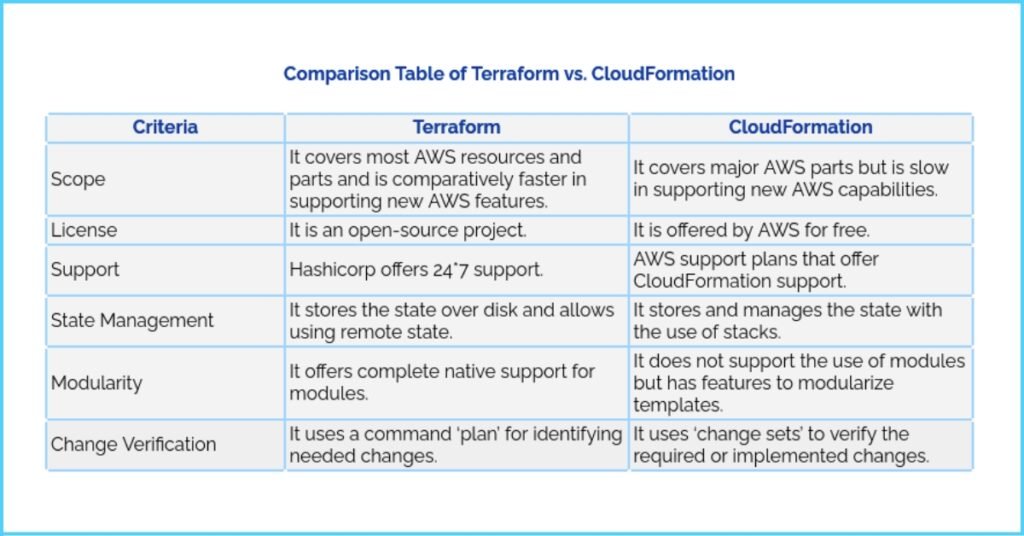
3. What are the key Terraform commands, and what do they do?
Terraform provides several core commands to manage infrastructure:
- terraform init: Initializes a Terraform working directory, downloading necessary providers and modules.
- terraform plan: Generates an execution plan, showing what changes Terraform will make to reach the desired state.
- terraform apply: Executes the plan, provisioning or updating infrastructure.
- terraform destroy: Removes all resources managed by Terraform.
- terraform validate: Checks configuration files for syntax and consistency.
4. What is a Terraform state file, and why is it important?
The Terraform state file (terraform.tfstate) tracks the current state of infrastructure managed by Terraform. It maps real-world resources to your configuration, enabling Terraform to detect changes, manage dependencies, and ensure consistency. The state file is critical for collaboration, as it allows multiple team members to work on the same infrastructure without conflicts.
5. What are Terraform providers, and why are they important?
Providers are plugins that enable Terraform to interact with specific APIs or services, such as AWS, Azure, or Google Cloud. They define the resources and data sources Terraform can manage. Providers are essential for Terraform’s cloud-agnostic nature, allowing it to support a wide range of platforms and services.
6. What are Terraform modules, and how do they benefit infrastructure management?
Modules are reusable containers for multiple resources that are used together. They simplify complex configurations, promote code reuse, and ensure consistency across environments. For example, a module can define a VPC setup that can be reused across different projects, reducing duplication and errors.
Master DSA, Web Dev & System Design
7. How does Terraform manage remote state, and why is it useful?
Remote state stores the Terraform state file in a remote backend, such as AWS S3 with DynamoDB for locking or Terraform Cloud. This enables secure collaboration, as multiple users can access and update the state file without conflicts. Remote state also enhances security by encrypting sensitive data and provides backup capabilities.
8. What are Terraform workspaces, and when should you use them?
Workspaces allow you to manage multiple isolated state files (e.g., for dev, staging, prod) within the same Terraform configuration. They are useful for simple setups where you want to maintain separate environments without duplicating code. For more complex scenarios, separate configurations or directories are often preferred.
9. How does Terraform handle importing existing infrastructure?
Terraform’s terraform import command allows you to bring existing resources into Terraform’s state file. You must manually define the resource in your configuration files to match the imported resource. This is useful for managing infrastructure created outside Terraform, though it requires careful alignment to avoid drift.
10. What are Terraform provisioners, and when should you use them?
Provisioners execute scripts on local or remote machines after resource creation, such as installing software or configuring services. They should be used sparingly, as they introduce external dependencies. Alternatives like Ansible or cloud-native configuration tools are often better for complex provisioning tasks.
Intermediate Terraform Interview Questions
These questions dive deeper into Terraform’s capabilities, testing your ability to handle real-world scenarios commonly encountered in mid-level roles.
11. What is drift detection in Terraform, and how can it be addressed?
Drift detection identifies discrepancies between the actual infrastructure and the Terraform configuration. During terraform plan, Terraform compares the state file with the configuration and highlights differences. To address drift, you can update the configuration to match the infrastructure and run terraform apply, or manually revert external changes to align with the configuration.
12. How would you implement a rolling update using Terraform?
A rolling update gradually replaces instances to minimize downtime. In Terraform, you can use count or for_each to manage multiple instances, updating them incrementally. For example, you might update an Auto Scaling group in AWS by modifying its launch configuration. Load balancers and health checks ensure traffic shifts smoothly, though Terraform alone may require integration with other tools for full automation.
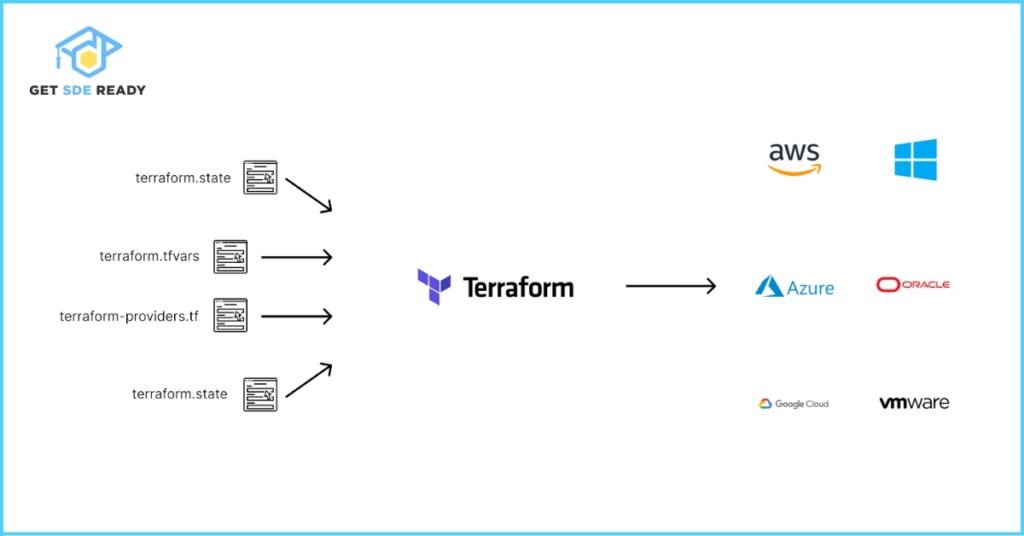
13. How do you handle resource dependencies in Terraform?
Terraform automatically manages dependencies through its resource graph, created by referencing resources (e.g., a security group referencing a VPC). For complex cases, the depends_on meta-argument explicitly defines dependencies, ensuring resources are created or updated in the correct order.
14. How do you manage complex multi-cloud deployments with Terraform?
Multi-cloud deployments involve configuring multiple providers in a single Terraform configuration, each with an alias (e.g., provider “aws” { alias = “us-east” }). Modules can organize resources for each cloud provider, and variables can parameterize configurations for reusability. This approach ensures consistent management across AWS, Azure, Google Cloud, or other platforms.
15. What are the taint and untaint commands in Terraform?
- terraform taint: Marks a resource for destruction and recreation during the next apply, useful for corrupted or misconfigured resources.
- terraform untaint: Removes the taint, preventing unnecessary recreation.
These commands help manage problematic resources without manual intervention.
16. What is Terraform Cloud, and how does it differ from open-source Terraform?
Terraform Cloud is a SaaS platform that extends open-source Terraform with features like remote state management, collaboration tools, private module registries, and policy enforcement. Unlike open-source Terraform, it offers built-in state locking and access controls, simplifying team workflows and enhancing security.
17. How do you manage state locking and concurrency in large teams using Terraform?
State locking prevents concurrent modifications to the state file, avoiding conflicts. Terraform Cloud and Enterprise handle locking automatically. For self-managed setups, backends like AWS S3 with DynamoDB provide locking mechanisms. Proper access controls and version control integration further ensure safe collaboration.
18. What are zero-downtime deployments, and how can Terraform be used to achieve them?
Zero-downtime deployments ensure applications remain available during updates. Terraform supports this by provisioning new resources (e.g., new EC2 instances) before destroying old ones, using techniques like blue-green deployments or rolling updates. Integration with load balancers and orchestration tools like Kubernetes may be needed for seamless traffic management.
19. How do you handle secrets management in Terraform?
Secrets management in Terraform involves:
- Using environment variables to avoid hardcoding sensitive data.
- Marking variables as sensitive to prevent them from appearing in logs.
- Integrating with secret management tools like HashiCorp Vault or AWS Secrets Manager.
- Encrypting remote state files to protect sensitive information.
20. How do you implement custom Terraform providers?
Custom providers are written in Go using the Terraform Plugin SDK to manage unsupported resources or services. This involves defining resource schemas and implementing CRUD operations for the target API. Custom providers are necessary for proprietary or niche systems not covered by existing providers.
Advanced Terraform Interview Questions
These questions are designed for senior roles, testing your deep understanding of Terraform’s advanced features and ecosystem.
21. What is Terragrunt, and how does it enhance Terraform workflows?
Terragrunt is a wrapper for Terraform that simplifies working with multiple modules and environments. It reduces code duplication, manages dependencies between modules, and enforces consistent configurations. For example, Terragrunt can apply common variables across environments, streamlining complex deployments.
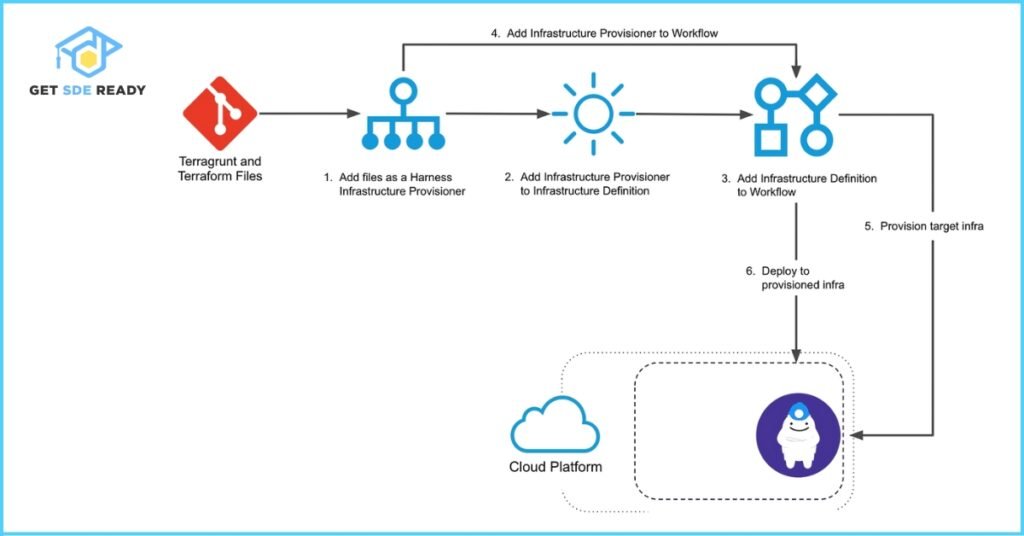
22. What is State File Locking in Terraform, and why is it important?
State file locking prevents multiple users from modifying the state file simultaneously, which could cause conflicts or data corruption. It’s critical for team collaboration, especially in large projects. Terraform Cloud handles locking automatically, while self-managed backends like S3 use DynamoDB for locking.
23. What is a Tainted Resource in Terraform, and how do you handle it?
A tainted resource is marked for destruction and recreation due to errors or manual changes. You can handle it by running terraform apply to recreate the resource or using terraform untaint to remove the taint if it was applied incorrectly. Tainting is useful for refreshing problematic resources.
24. What is Drift Detection in Terraform, and how does it work?
Drift detection identifies differences between the Terraform configuration and the actual infrastructure. During terraform plan, Terraform compares the state file with the configuration, highlighting discrepancies. You can resolve drift by updating the configuration or manually aligning the infrastructure.
25. What is Sentinel in Terraform, and what purpose does it serve?
Sentinel is a policy-as-code framework used in Terraform Cloud and Enterprise to enforce compliance and best practices. It allows you to define rules (e.g., requiring specific tags on resources) that are checked before applying changes, ensuring configurations meet organizational standards.
26. What are the key features of Terraform that make it popular for infrastructure automation?
Terraform’s popularity stems from:
- Cloud-Agnostic: Supports multiple providers, enabling multi-cloud and hybrid deployments.
- Declarative Syntax: HCL simplifies defining desired infrastructure states.
- State Management: Tracks infrastructure changes for consistency and collaboration.
- Modularity: Reusable modules reduce complexity and promote consistency.
- Community Support: A large ecosystem of providers and modules.
27. How does Terraform ensure consistency across different environments (dev, staging, prod)?
Terraform ensures consistency through:
- Modules: Reusable configurations for consistent resource definitions.
- Variables: Parameterize configurations for environment-specific settings.
- Workspaces or Separate Directories: Isolate state files for different environments.
- Version Control: Store configurations in Git for versioning and collaboration.
28. What are some best practices for writing Terraform code?
Best practices include:
- Use modules for reusable, organized code.
- Store state files remotely with encryption and locking.
- Use variables and locals for flexibility and maintainability.
- Follow naming conventions (e.g., terraform-<provider>-<name> for modules).
- Integrate with version control systems like GitHub for collaboration.
Get : Crash Course
29. How can you version control your Terraform configurations?
Terraform configurations can be versioned using Git-based systems like GitHub, GitLab, or Bitbucket. Store .tf files in a repository, use branches for different environments, and tag releases for stability. This enables collaboration, change tracking, and rollback capabilities.
30. What are some common challenges when working with Terraform, and how can they be overcome?
Common challenges include:
- State File Conflicts: Use remote backends with locking (e.g., S3 with DynamoDB).
- Drift Management: Regularly run terraform plan to detect and resolve drift.
- Complex Dependencies: Use depends_on and modularize code for clarity.
- Secrets Exposure: Integrate with Vault or use sensitive variables.
- Performance Issues: Optimize large configurations with modules and targeted applies.

Conclusion
Mastering Terraform is crucial for infrastructure roles, as it empowers you to automate and manage complex environments efficiently. By understanding these 30 interview questions, from basic commands to advanced concepts like Sentinel and Terragrunt, you’ll be well-prepared to showcase your expertise. Practice writing Terraform code, explore real-world scenarios, and stay updated with the latest features to excel in your interviews.
To further enhance your skills in related fields, explore our courses:Web Development
FAQs
What is the difference between Terraform and Ansible?
Terraform provisions infrastructure, defining what resources should exist, while Ansible manages configurations, specifying how systems should be set up. Both can complement each other in a DevOps workflow.
How does Terraform handle state management?
Terraform uses a state file to track infrastructure, stored locally or remotely (e.g., S3 with DynamoDB). Remote state with locking ensures safe collaboration and prevents conflicts.
What are Terraform modules, and why are they useful?
Modules are reusable sets of Terraform configurations that simplify complex setups, promote consistency, and reduce errors by enabling code reuse across projects.
Can Terraform be used for on-premises infrastructure?
Yes, Terraform supports providers like VMware and OpenStack, allowing you to manage on-premises and cloud resources consistently with the same tool.
How can I ensure security when using Terraform?
Use encrypted remote state, integrate with secret management tools like Vault, mark variables as sensitive, and enforce policies with Sentinel to maintain security.
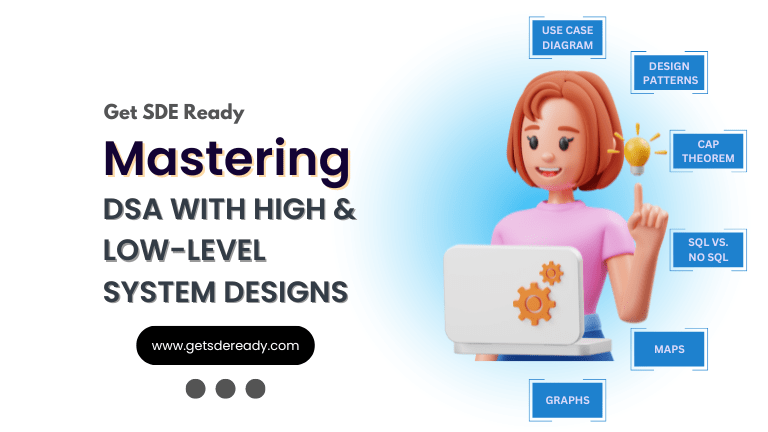
DSA, High & Low Level System Designs
- 85+ Live Classes & Recordings
- 24*7 Live Doubt Support
- 400+ DSA Practice Questions
- Comprehensive Notes
- HackerRank Tests & Quizzes
- Topic-wise Quizzes
- Case Studies
- Access to Global Peer Community
Buy for 52% OFF
₹25,000.00 ₹11,999.00
Accelerate your Path to a Product based Career
Boost your career or get hired at top product-based companies by joining our expertly crafted courses. Gain practical skills and real-world knowledge to help you succeed.
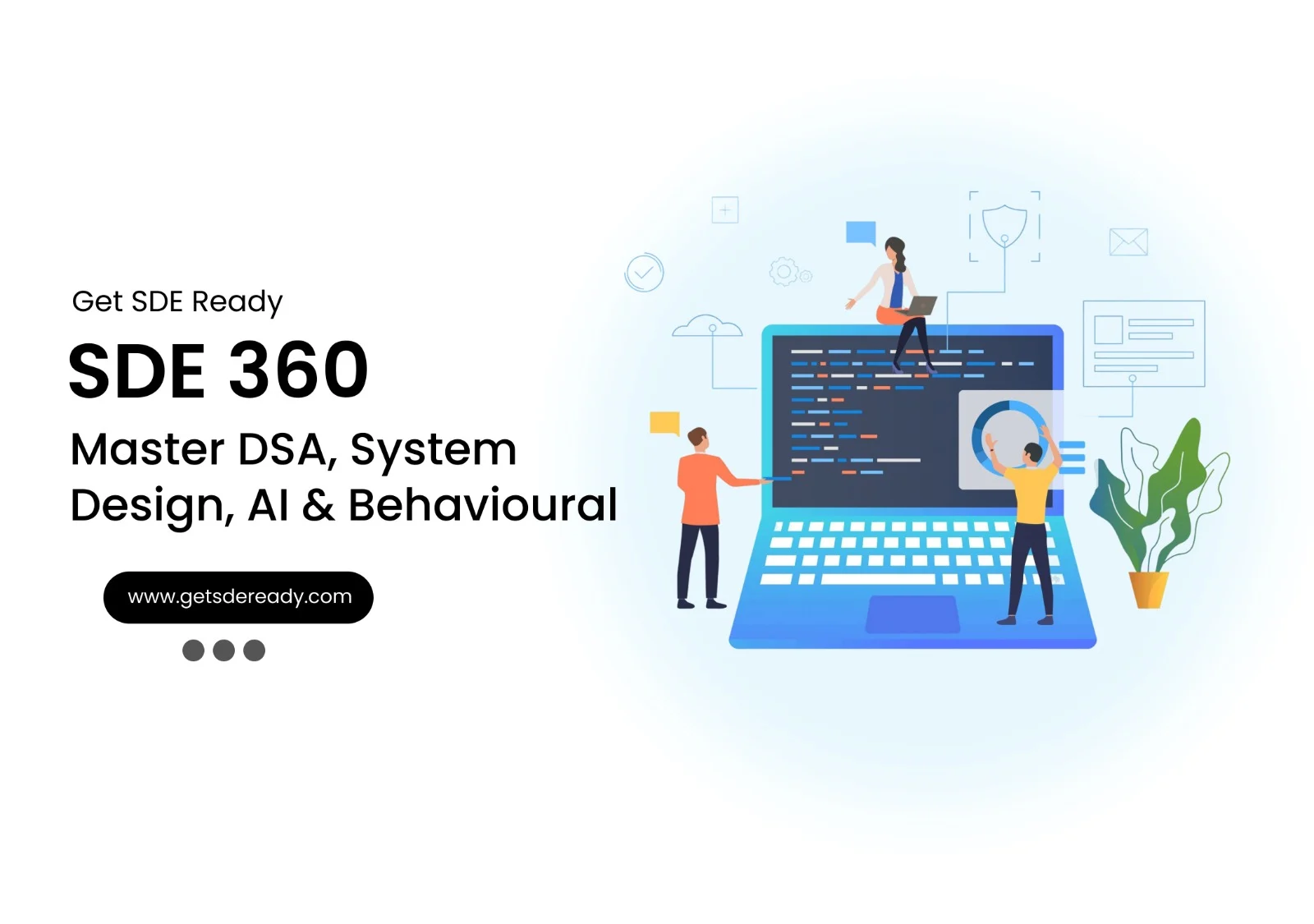
SDE 360: Master DSA, System Design, AI & Behavioural
- 100+ Live Classes & Recordings
- 24*7 Live Doubt Support
- 400+ DSA Practice Questions
- Comprehensive Notes
- HackerRank Tests & Quizzes
- Topic-wise Quizzes
- Case Studies
- Access to Global Peer Community
Buy for 50% OFF
₹39,999.00 ₹19,999.00

DSA, High & Low Level System Designs
- 85+ Live Classes & Recordings
- 24*7 Live Doubt Support
- 400+ DSA Practice Questions
- Comprehensive Notes
- HackerRank Tests & Quizzes
- Topic-wise Quizzes
- Case Studies
- Access to Global Peer Community
Buy for 52% OFF
₹25,000.00 ₹11,999.00
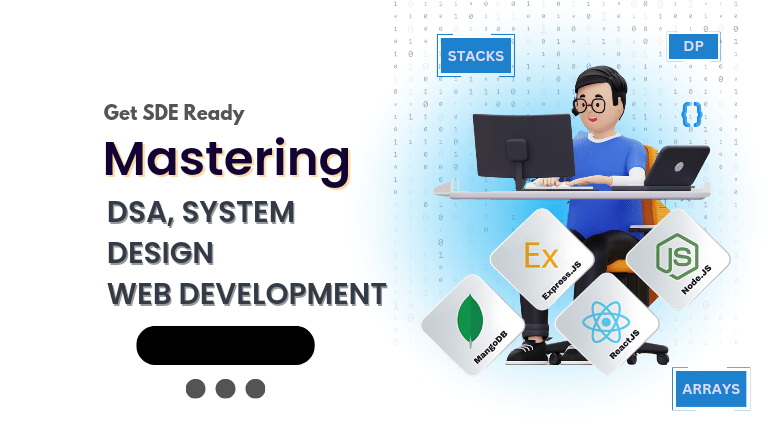
Fast-Track to Full Spectrum Software Engineering
- 120+ Live Classes & Recordings
- 24*7 Live Doubt Support
- 400+ DSA Practice Questions
- Comprehensive Notes
- HackerRank Tests & Quizzes
- 12+ live Projects & Deployments
- Case Studies
- Access to Global Peer Community
Buy for 51% OFF
₹35,000.00 ₹16,999.00
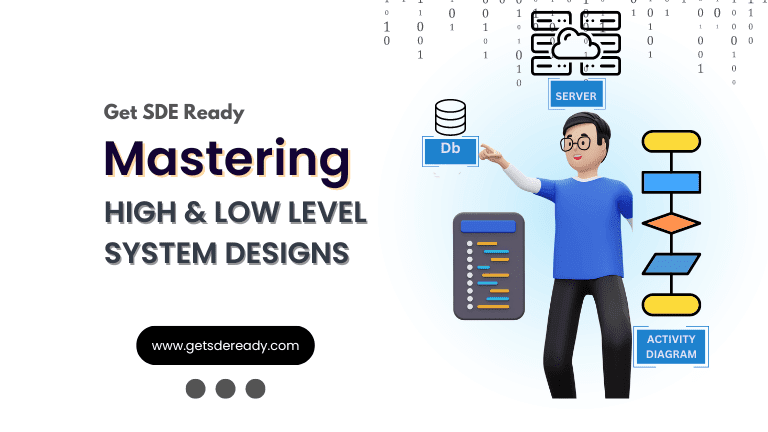
Low & High Level System Design
- 20+ Live Classes & Recordings
- 24*7 Live Doubt Support
- Case Studies
- Comprehensive Notes
- HackerRank Tests
- Topic-wise Quizzes
- Access to Global Peer Community
- Interview Prep Material
Buy for 60% OFF
₹20,000.00 ₹7,999.00
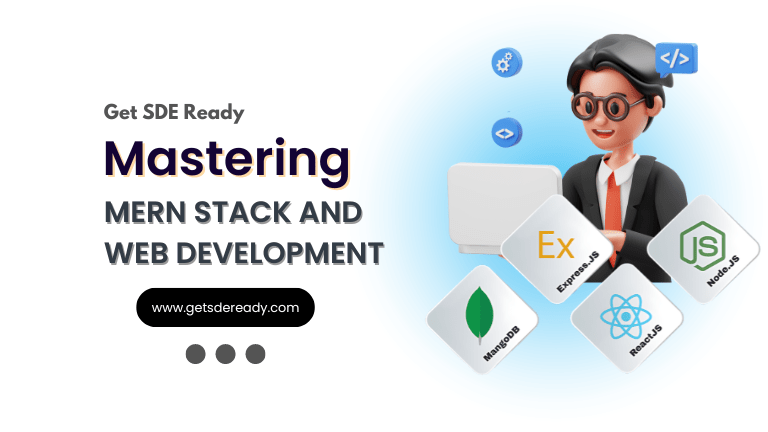
Mastering Mern Stack (WEB DEVELOPMENT)
- 65+ Live Classes & Recordings
- 24*7 Live Doubt Support
- 12+ Hands-on Live Projects & Deployments
- Comprehensive Notes & Quizzes
- Real-world Tools & Technologies
- Access to Global Peer Community
- Interview Prep Material
- Placement Assistance
Buy for 53% OFF
₹15,000.00 ₹6,999.00
Reach Out Now
If you have any queries, please fill out this form. We will surely reach out to you.
Contact Email
Reach us at the following email address.
arun@getsdeready.com
Phone Number
You can reach us by phone as well.
+91-97737 28034
Our Location
Rohini, Sector-3, Delhi-110085
